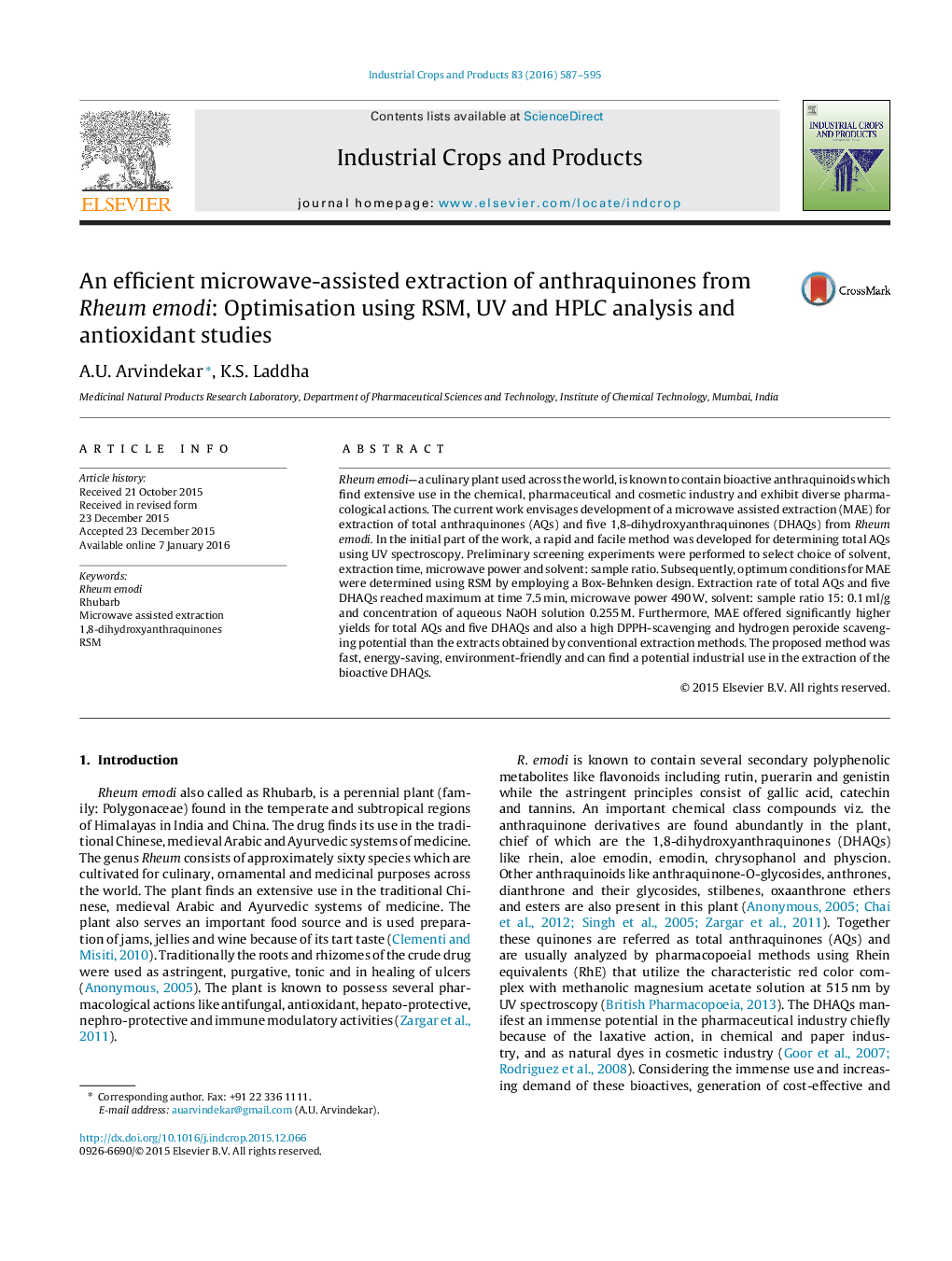| کد مقاله | کد نشریه | سال انتشار | مقاله انگلیسی | نسخه تمام متن |
|---|---|---|---|---|
| 4512318 | 1624827 | 2016 | 9 صفحه PDF | دانلود رایگان |

• MAE was developed for extraction of DHAQs from culinary plant R. emodi.
• Optimization of extraction parameters was done by RSM.
• Classical methods and MAE method were compared for extraction for DHAQs.
• Antioxidant potential of MAE and conventional methods was evaluated.
• MAE offered maximum DHAQ extraction and highest DPPH and peroxide scavenging.
Rheum emodi—a culinary plant used across the world, is known to contain bioactive anthraquinoids which find extensive use in the chemical, pharmaceutical and cosmetic industry and exhibit diverse pharmacological actions. The current work envisages development of a microwave assisted extraction (MAE) for extraction of total anthraquinones (AQs) and five 1,8-dihydroxyanthraquinones (DHAQs) from Rheum emodi. In the initial part of the work, a rapid and facile method was developed for determining total AQs using UV spectroscopy. Preliminary screening experiments were performed to select choice of solvent, extraction time, microwave power and solvent: sample ratio. Subsequently, optimum conditions for MAE were determined using RSM by employing a Box-Behnken design. Extraction rate of total AQs and five DHAQs reached maximum at time 7.5 min, microwave power 490 W, solvent: sample ratio 15: 0.1 ml/g and concentration of aqueous NaOH solution 0.255 M. Furthermore, MAE offered significantly higher yields for total AQs and five DHAQs and also a high DPPH-scavenging and hydrogen peroxide scavenging potential than the extracts obtained by conventional extraction methods. The proposed method was fast, energy-saving, environment-friendly and can find a potential industrial use in the extraction of the bioactive DHAQs.
Figure optionsDownload as PowerPoint slide
Journal: Industrial Crops and Products - Volume 83, May 2016, Pages 587–595